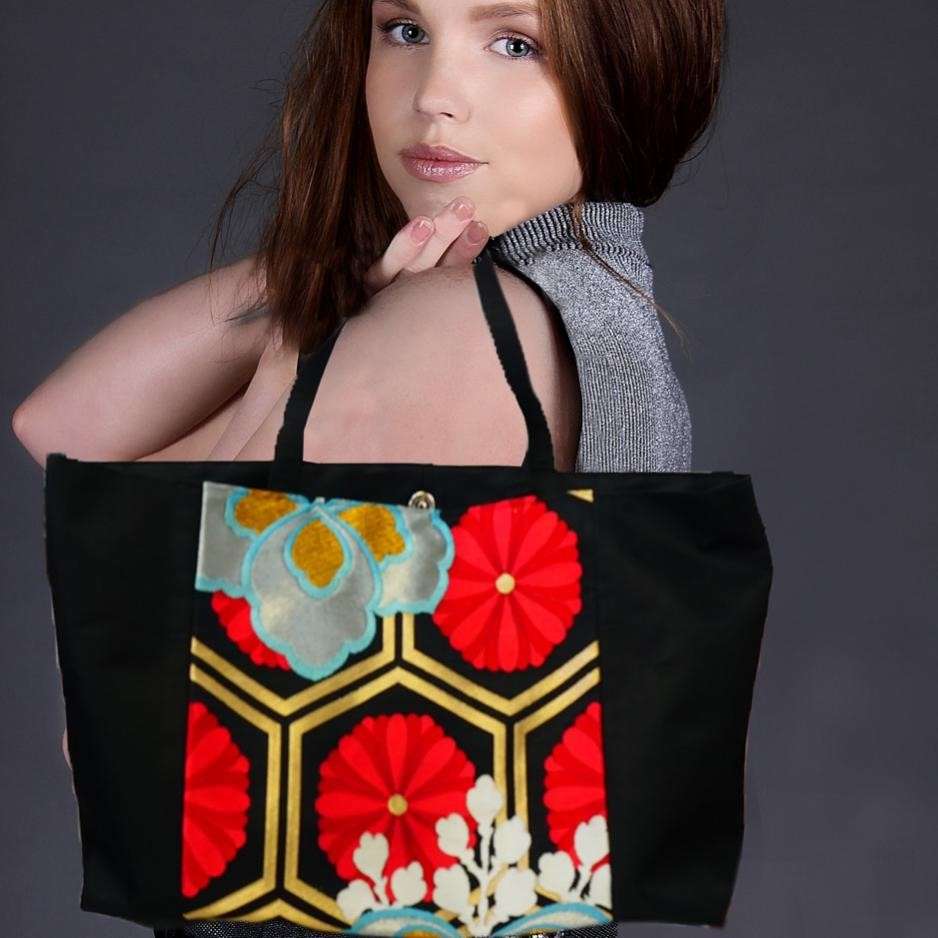 While the kimono is a wardrobe staple for anyone with Japanese heritage, it’s quickly gained popularity worldwide. As people have discovered, with one article of clothing, you can easily add a touch of elegance and class to any outfit. Beyond that, kimonos come in many beautiful patterns and a hue of eye-catching colors. What makes this item of clothing even more unique is the fact that it is handcrafted, so no two kimonos are exactly alike. In other words, you can find a kimono that’s as unique as your personality and be confident that you have a one-of-a-kind product. This makes the kimono the perfect article of clothing for both women and men who pride themselves in owning unique clothes and accessories.
While the kimono is a wardrobe staple for anyone with Japanese heritage, it’s quickly gained popularity worldwide. As people have discovered, with one article of clothing, you can easily add a touch of elegance and class to any outfit. Beyond that, kimonos come in many beautiful patterns and a hue of eye-catching colors. What makes this item of clothing even more unique is the fact that it is handcrafted, so no two kimonos are exactly alike. In other words, you can find a kimono that’s as unique as your personality and be confident that you have a one-of-a-kind product. This makes the kimono the perfect article of clothing for both women and men who pride themselves in owning unique clothes and accessories.
While kimonos are more popular among women, they are actually designed to be unisex, and the designs feature some more subtle colors chosen specifically for men. kimonos that are designed for men are much more subdued – in both color and fashion – than those designed for women. A man’s kimono is typically wrapped around the waist, below the stomach and then tied with a simple knot in the back. On the other hand, a woman’s kimono is long, flowing and elegant.
Despite the kimono’s growing popularity all over the world, most non-Japanese wearers of the kimono are not aware of the powerful cultural significance that this item of clothing carries with it. The original Japanese kimono was actually inspired by clothing worn in China during the Wu dynasty. This clothing, worn by the Han, was a silk robe – a traditional dress that was worn befre the Chinese Qing Dynasty in the 1600s. The kimono changed along with the rulers and the unique Japanese fashion of layering silk robes was eventually developed between the 8th century and the 11th century.
The first Japanese kimono was designed during the Heian period (794-1192). To make this kimono, straight cuts of fabric were sewn together, resulting in an article of clothing that fit any body shape. This kimono was easy to wear and versatile, making it ideal for special events as well as everyday wear. By the Edo period (1603-1868), the kimono had transformed into a unisex outer garment known as the Kosode.
What is the cultural symbolism behind the Japanese kimono?
The Japanese kimono is a symbol of longevity and good fortune. The hand-sewn designs can be used to indicate virtues or characteristics of the wearer. Similarly, you can get a kimono designed to reflect a specific season or occasion such as a wedding, where the action of wearing the kimono is believed to bring good luck.
How has the kimono evolved over the years?
The kimono has gone through several iterations to get to what we know today. The original kimono from the Nara period to the Heian period was designed as a two-piece garment or a one-piece garment. The Samurais of Japan also adopted kimonos as everyday wear, and these usually consisted of both an outer and inner layer. While kimonos were traditionally made of silk by default, the quality of the fabric normally reflected the social status of the wearer.
The traditional kimono can be difficult to wear every day, considering the daily commitments of the average person. When compared to Western clothing, the traditional kimono tends to restrict movement. It also takes longer to wear and store properly. For this reason, the traditional kimono is reserved for special events such as weddings, tea ceremonies and other formal occasions where the wearer wants to embrace and display their Japanese heritage.
Newer versions of the kimono have now been designed for everyday wear using fabrics like linen, rayon and polyester that allow the wearer freedom of movement. The fact that they have fewer layers than the traditional kimono that boasts 12 layers also makes modern kimonos easier to use across seasons. In addition to these alternative materials being more functional for everyday use, they also cost less than silk.
Why do Japanese kimonos cost so much money?
Aside from the fact that the traditional kimono is made of silk, a relatively expensive material, the design of the kimono also makes it impossible to automate the production of the kimono itself. Most of the seams and edges that you find in a kimono have to be sewn by hand since they require blind stitching.
Moreover, when you add hemp, linen, silk brocade, silk crepes and satin weaves to the base layer of silk, as most kimono craftsmen do, the finished product becomes quite expensive.
How Rapyuta Sumie has redesigned the kimono
While the kimono is a beautiful addition to any wardrobe and will add a classic sparkle to any outfit, the traditional kimono isn’t versatile enough for everyday use. When compared to Western clothing, the kimono tends to restrict movement. It also takes longer to wear and store properly. This is why the kimono is now primarily worn at weddings, tea ceremonies, formal occasions, and seasonal and religious celebrations among the Japanese community.
Given that the kimono is reserved for use at special events, it’s no surprise that the kimono industry was hit hard at the onset of the COVID-19 pandemic. After all, with social distancing and lockdowns in place all over the world, there were few events to get dressed up for.
As we lose opportunities to wear the kimono, the industry has become smaller and smaller. In fact, the kimono industry was worth 1.8 trillion JPY in 1980s but in 2020 the industry value has dropped to 270 billion JPY. Although kimono craftsmen spend lots of time designing and producing kimono obi products, they end up spending most of their lifetime in our closets. By upcycling the kimono into bags and belts, Rapyuta Sumie has turned them into versatile statement pieces for daily use.
The purpose of this project is to repurpose these products and reintroduce them into people’s wardrobes as everyday accessories. By reinventing the kimono, the team at Rapyuta Sumie also hopes to revive the industry and create more opportunities for craftsmen and women.
You can buy these kimono obi bags and belts on Facebook.


























